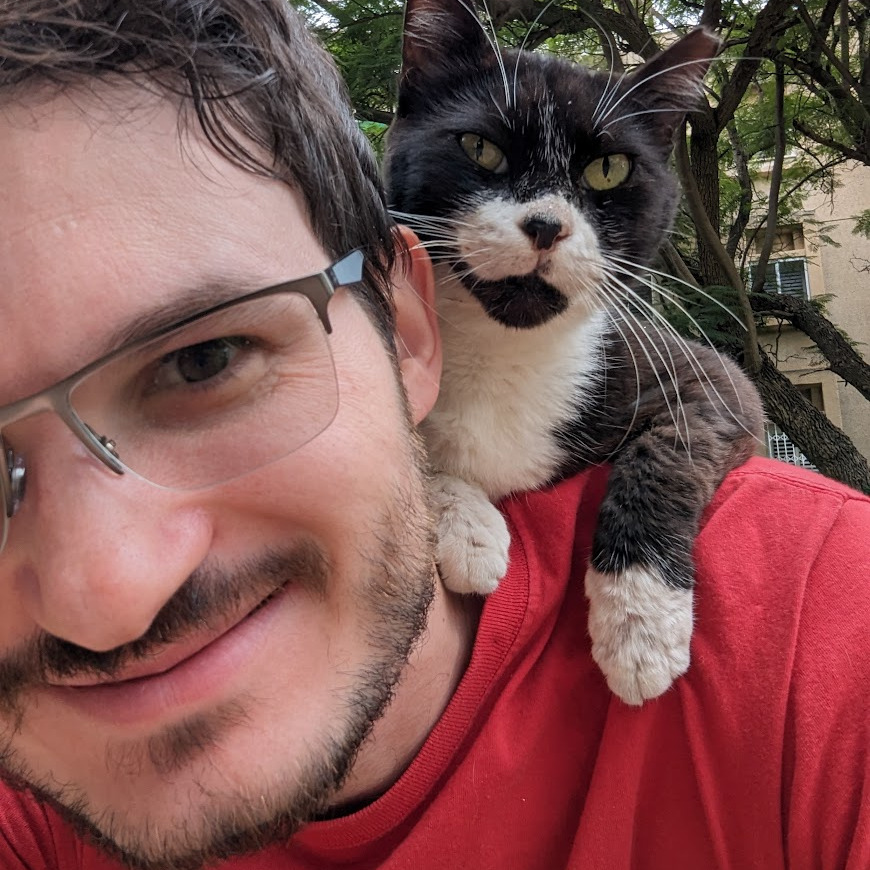Installing Growroot on CentOS
The story
I currently work with CentOS on Amazon EC2. As I previously written, The HVM version of the AMI is created with a partitioned disk, instead of having the filesystem written directly on the block device.
Problem is, when creating a root device bigger than the default (8G), you have to resize both the partition and the filesystem. While the filesystem can be resized online, the partition can’t.
The issue looks something like this:
lsblk
Without a partition:
NAME MAJ:MIN RM SIZE RO TYPE MOUNTPOINT
xvde 202:64 0 30G 0 disk /
With a partition:
NAME MAJ:MIN RM SIZE RO TYPE MOUNTPOINT
xvda 202:0 0 30G 0 disk
└─xvda1 202:1 0 8G 0 part /
The partition can actually be resized (as in deleted and recreated), but the updated partition table won’t be available because the partition is in use (and you can’t unmount the root partition).
The ugly solution
Before learning of a better way, I wrote this script. It checks if the root device is a partition, and if so whether it’s filling up the parent disk. If not, it deletes the root partition and recreates it to fill up the entire disk. Although it has been tested, I don’t think it’s a good idea to use it.
echo BEFORE PARTITION RESIZE
ROOT_DEVICE=$(df / | tail -n1 | cut -f1 -d ' ')
ROOT_TYPE=$(lsblk $ROOT_DEVICE -no TYPE)
if [ "$ROOT_TYPE" = "part" ] ; then
# find the parent disk
ROOT_MAJMIN=$(lsblk $ROOT_DEVICE -no MAJ:MIN | tr -d ' ')
ROOT_SIZE=$(cat /sys/dev/block/${ROOT_MAJMIN}/size)
PARENT_SIZE=$(cat /sys/dev/block/${ROOT_MAJMIN}/../size)
ROOT_START=$(cat /sys/dev/block/${ROOT_MAJMIN}/start)
PARENT_NAME=$(cat /sys/dev/block/${ROOT_MAJMIN}/../uevent | perl -ne 'print $1,$/ if /^DEVNAME=(.+)$/')
# Check if the same size
if (( $PARENT_SIZE - $ROOT_START > $ROOT_SIZE )); then
echo "Recreating partition ${ROOT_DEVICE} on /dev/${PARENT_NAME}, starting in ${ROOT_START}"
echo -e "u\np\nd\nn\np\n1\n${ROOT_START}\n\na\n1\np\nw\n" | fdisk /dev/${PARENT_NAME}
reboot # <-- REBOOTING HERE
sleep 60
else
echo "Partition ${ROOT_DEVICE} is fine"
fi
else
echo "${ROOT_DEVICE} is not a partition - its ${ROOT_TYPE}"
fi
echo AFTER PARTITION RESIZE
And I have a similar one for the filesystem:
ROOT_DEVICE=$(df / | tail -n1 | cut -f1 -d ' ')
ROOT_DEVICE_SIZE_B=$(blockdev --getsize64 $ROOT_DEVICE)
ROOT_FS_BLOCK_COUNT=$(tune2fs -l $ROOT_DEVICE | perl -ne 'print $1,$/ if /Block count:\s+(\d+)$/')
ROOT_FS_BLOCK_SIZE=$(tune2fs -l $ROOT_DEVICE | perl -ne 'print $1,$/ if /Block size:\s+(\d+)$/')
# If the root FS is smaller in at least one block size than the root device size
if (( ( $ROOT_FS_BLOCK_COUNT +1 ) * $ROOT_FS_BLOCK_SIZE < $ROOT_DEVICE_SIZE_B )); then
echo resizing filesystem
resize2fs $ROOT_DEVICE
fi
The proper solution
Update 21.04.16: Thanks to Trevor’s tip, I switched from perl to sed, saving us the need of installing a package (a big win for Linux sysadmins).
Just before deploying my script, I stumbled upon dracut-modules-growroot, which (like most things cloud) was imported from Ubuntu.
It’s available via EPEL, and when installed to the initramfs, it enlarges the root partition (if needed) before actually mounting it. This saves you the reboot, because when in the initramfs stage, the root partition isn’t really mounted, so it can be modified easily.
The steps I use in my image are:
-
Install all available updates
:::bash yum update -y -
Install the EPEL helper package
:::bash yum install -y epel-release -
Install
cloud-initanddracut-modules-growroot:::bash yum install -y cloud-init dracut-modules-growrootThis has to be done after installing
epel-release, because otherwise YUM won’t look in the EPEL repository, where dracut-modules-growroot is available.
Cloud Init is useful in running startup scripts, but it also has an enabled-by-default module (great documentation, right?) that resizes the root filesystem (resize2fs-like) if its block device is bigger.
You can avoid installing it, but then you’ll have to resize the filesystem on your own (see my second ugly script). -
Rebuild all initramfs images.
:::bash rpm -qa kernel | sed 's/^kernel-//' | xargs -I {} dracut -f /boot/initramfs-{}.img {}This is very important. Without rebuilding the initramfs images, the module won’t be available and nothing will get done.
Also note that I’m explicitly rebuilding an image for every kernel package installed - this is because we might be running kernel A, and just installed newer kernel B withyum update -y, so if I only useddracut -fonly kernel A’s image will be rebuilt, and next time we’ll boot from kernel B’s image, that doesn’t have the module.
The full script:
yum update -y
yum install -y epel-release
yum install -y cloud-init dracut-modules-growroot
rpm -qa kernel | sed 's/^kernel-//' | xargs -I {} dracut -f /boot/initramfs-{}.img {}
Troubleshooting
You can easily compare the sizes of your root block device, it’s parent and the root filesystem itself by running:
echo lsblk;lsblk
echo df; df -h /
A successful result should look like this:
lsblk
NAME MAJ:MIN RM SIZE RO TYPE MOUNTPOINT
xvda 202:0 0 30G 0 disk
└─xvda1 202:1 0 30G 0 part /
df
Filesystem Size Used Avail Use% Mounted on
/dev/xvda1 30G 963M 27G 4% /
If the script completes successfully but the partition isn’t magically resized, you can use this to search for growroot’s files in the initrd image that was used to boot:
sudo lsinitrd | grep grow
For me, it looks like this:
-rwxr-xr-x 1 root root 133 Nov 22 2013 cmdline/99growroot-dummy.sh
-rwxr-xr-x 1 root root 2167 Nov 22 2013 pre-mount/99growroot.sh
-rwxr-xr-x 1 root root 16069 Nov 22 2013 usr/bin/growpart
If the files are there but still no magic, try fishing in /var/log/{messages,secure} or dmesg. I always had everything working if the files were actually there.
